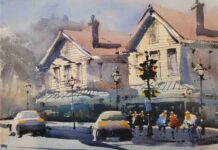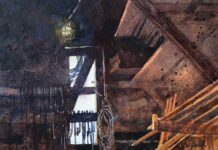“Found in a number of western landscapes, hollyhocks look simple to paint at first, but the characteristic leaves and stalks can be a challenge,” says Buffalo Kaplinski. “I find watercolor the best medium for capturing their crisp edges and shapes. Grown in a variety of colors, they seem to thrive in dry places of my garden.
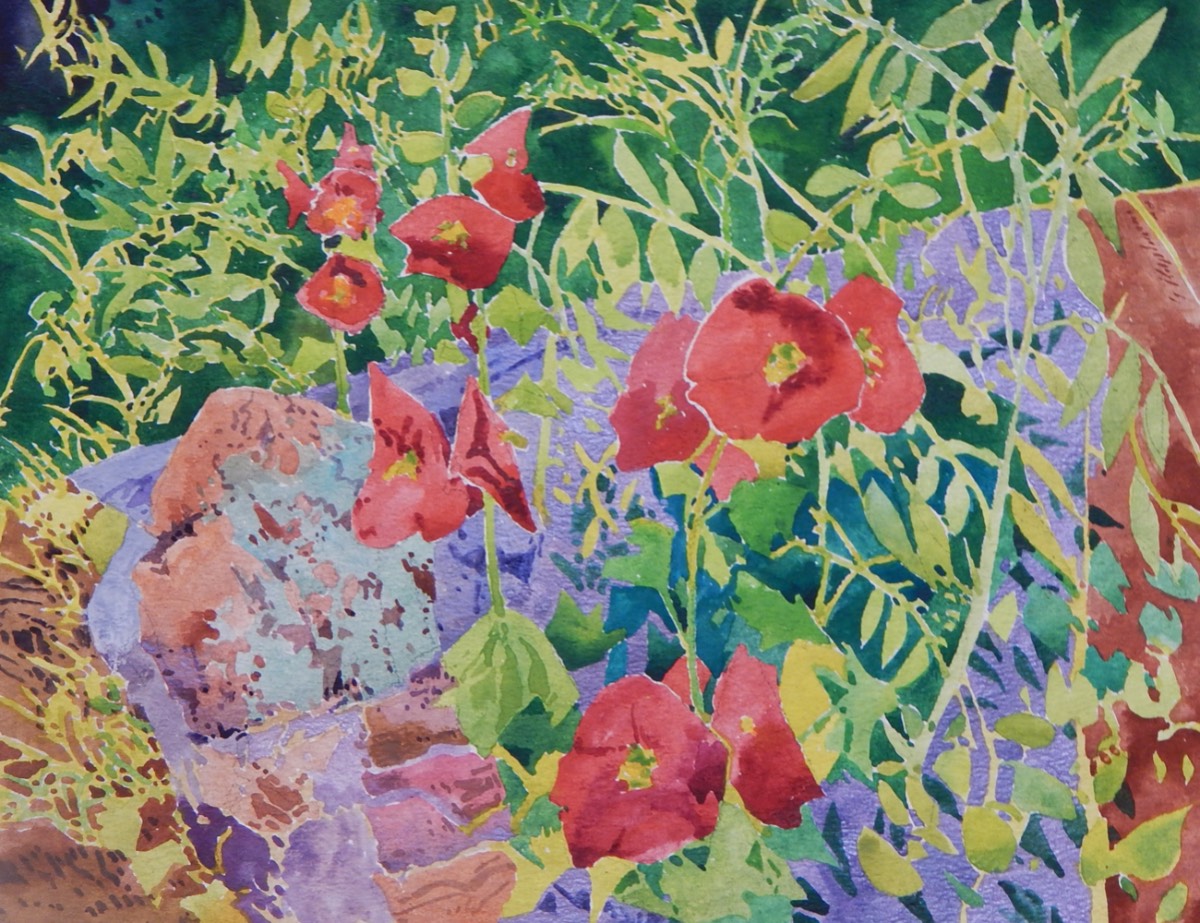
“Most of us who make representational art are interested in drawing and take time to hone that skill; in watercolor especially, there’s no faking it. The trick to a crisp, fresh, and believable watercolor is making a careful drawing without detailing every shape; watercolor is a fluid media after all.
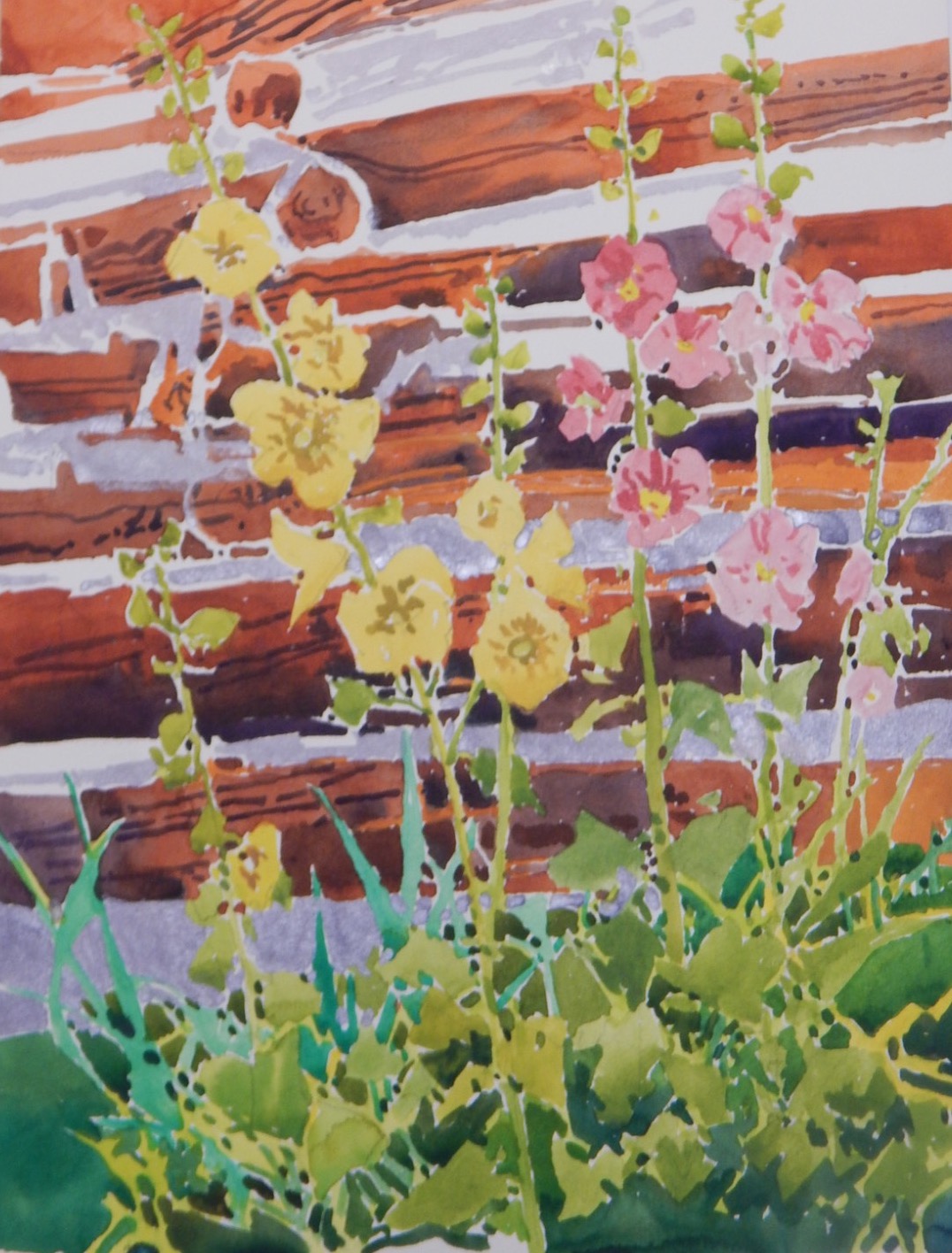
“I prefer an HB pencil for drawing, but before putting in even the lightest values, I think carefully about the color I want for the painting. Even when I’m painting en plein air, I use the best brushes I can find to get the best results in my work — most often a No. 7 (or No. 8) long handle professional red sable by Winsor & Newton, a Princeton No. 6 liner, a No. 4 by Black Velvet, and a No. 6 Silver Brush script. I also like Cheap Joe’s Dream Catcher brushes. I never use any masking fluid. I prefer painting around negative and positive shapes the way I was taught by Irving Shapiro.”
MORE FLORAL WATERCOLOR PAINTINGS
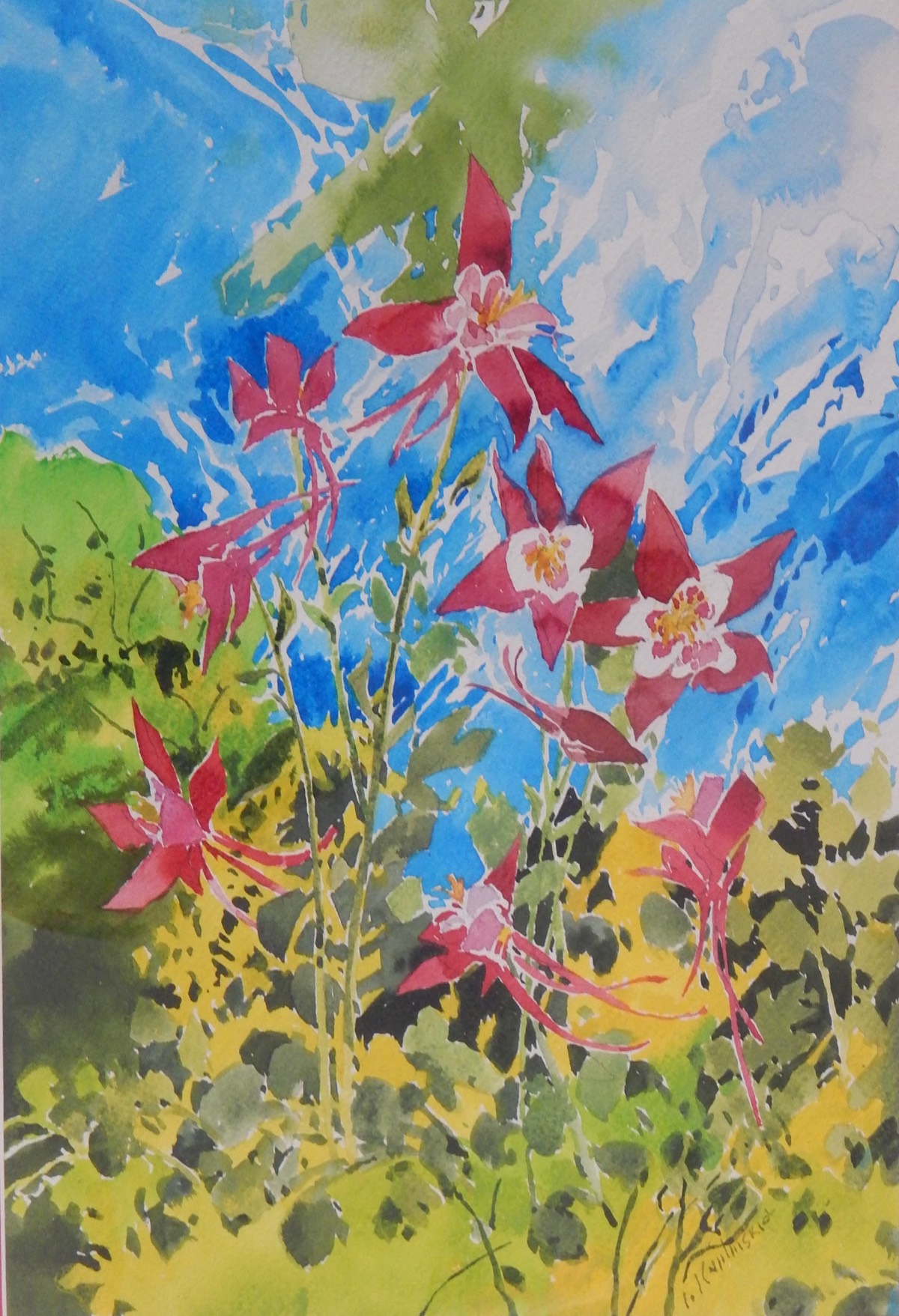
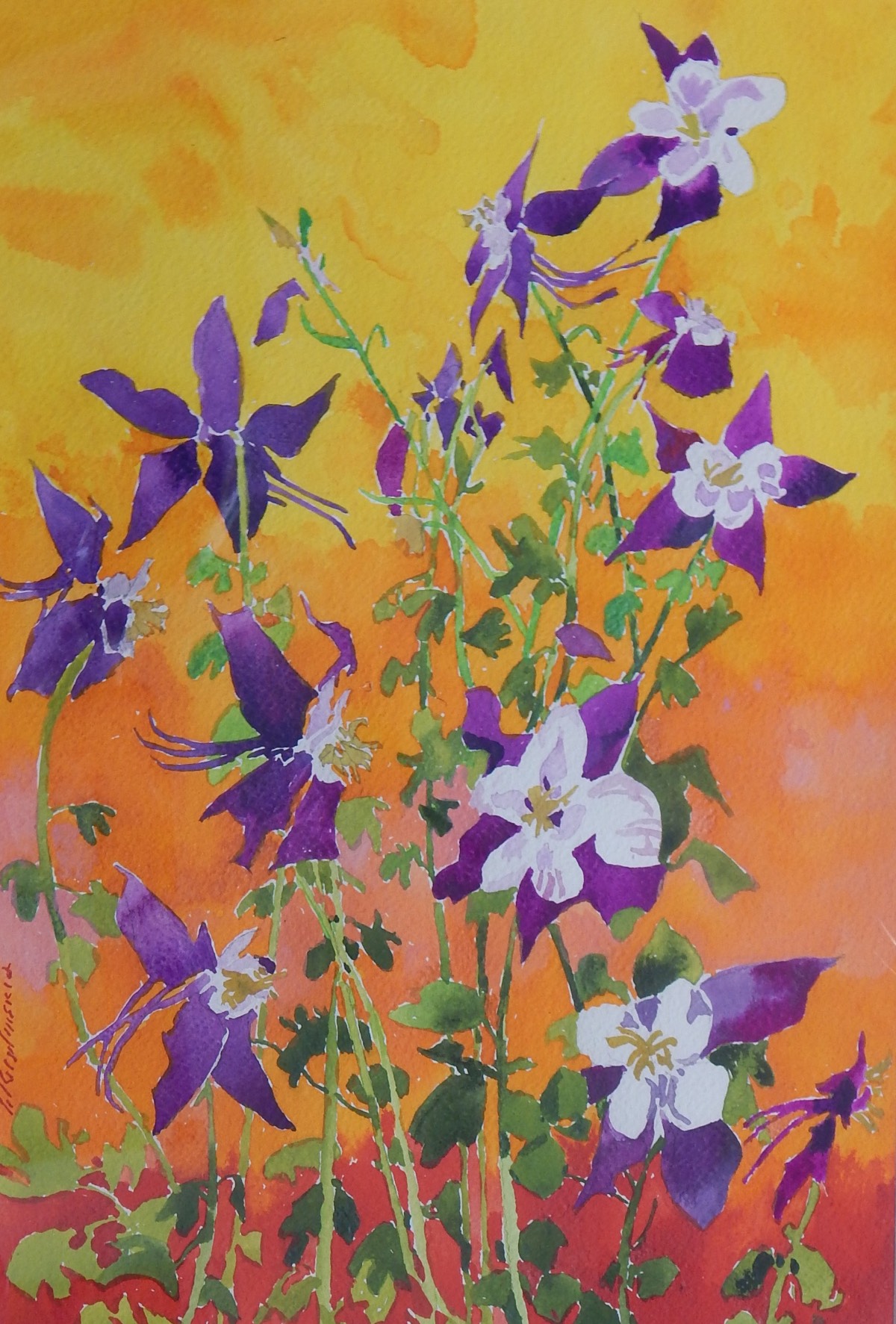
Join Buffalo Kaplinski and other top watercolor artists including Michael Holter, Barbara Tapp, Dan Mondloch, Iain Stewart, and Vladislav Yeliseyev at the Plein Air Convention & Expo, May 21-25, 2023 in Colorado.

